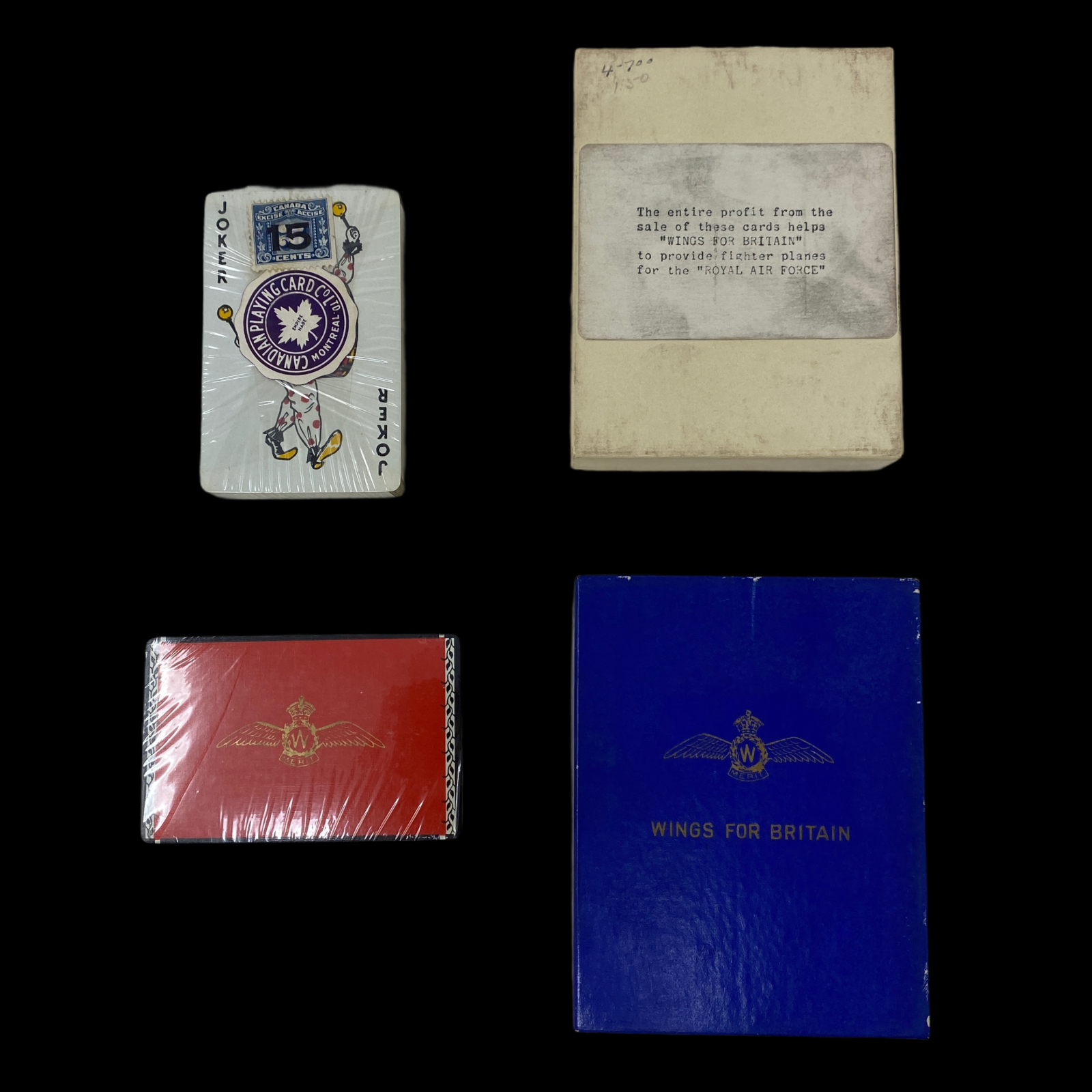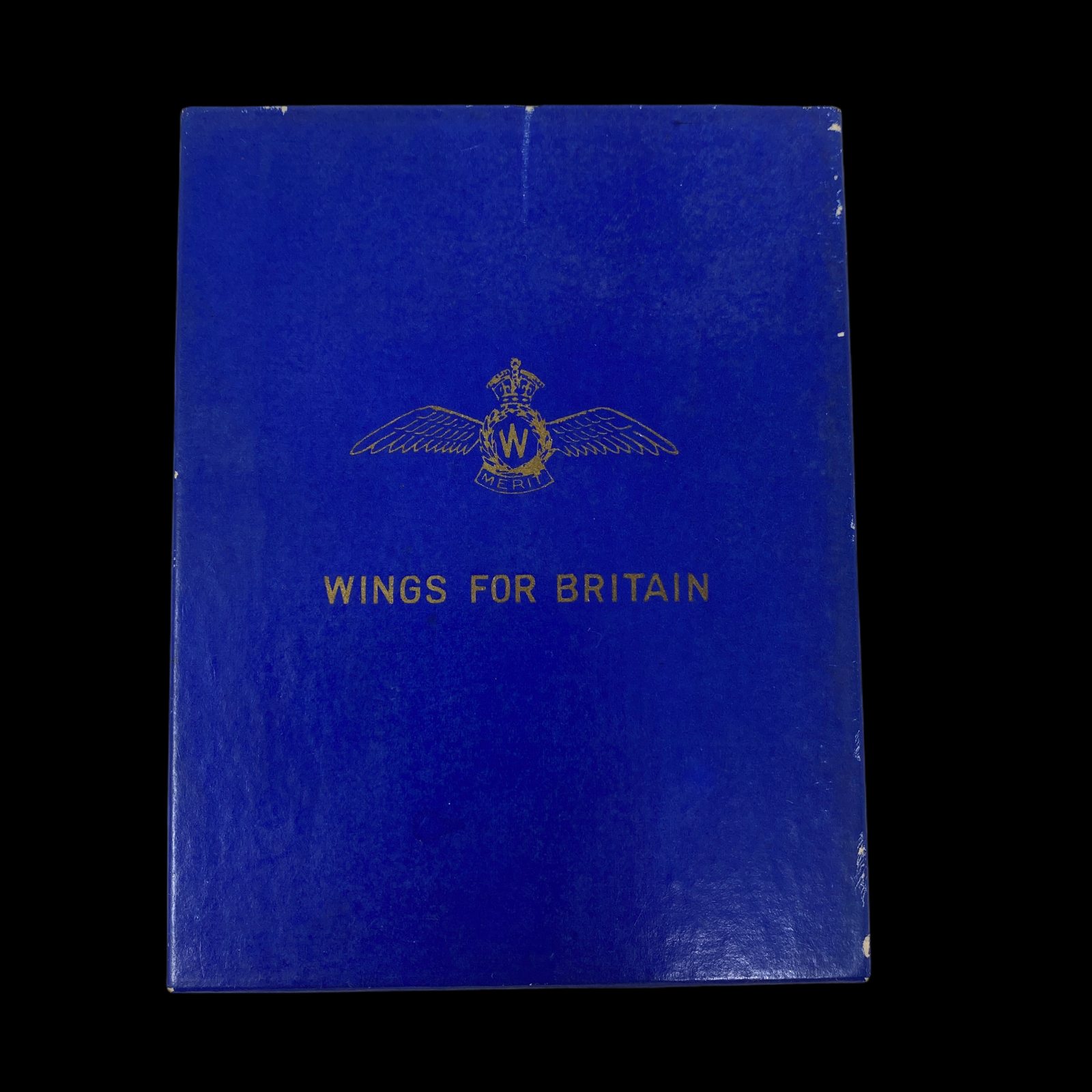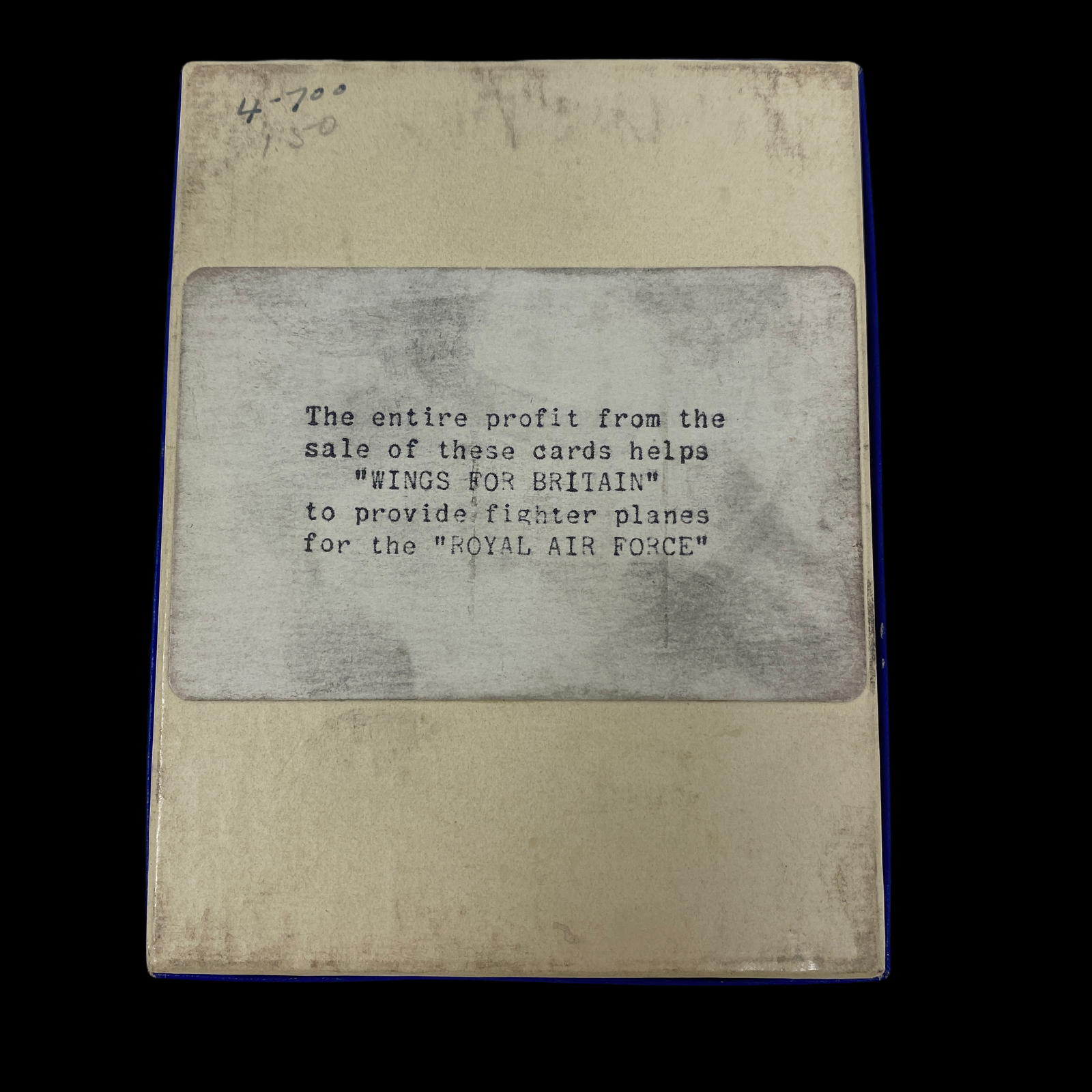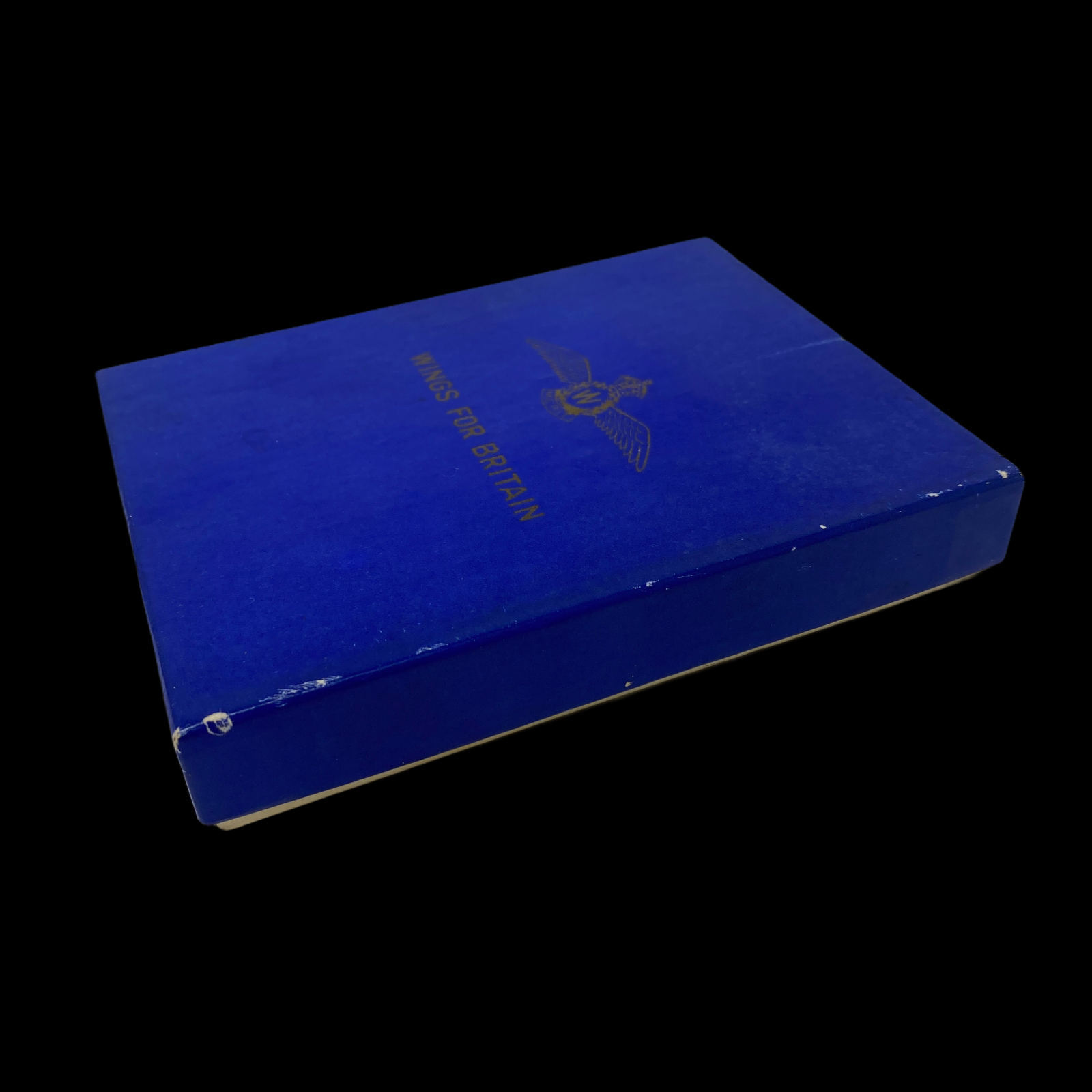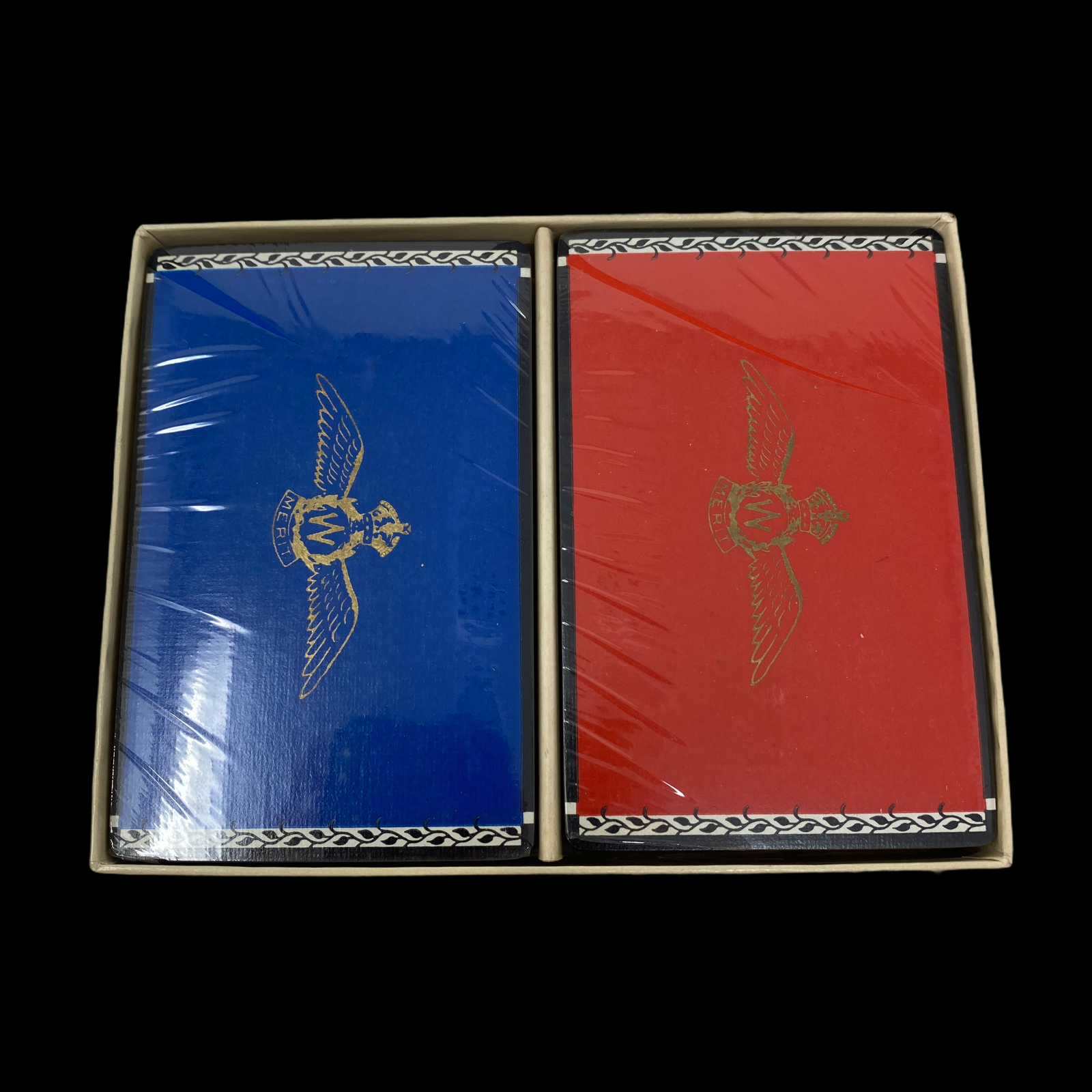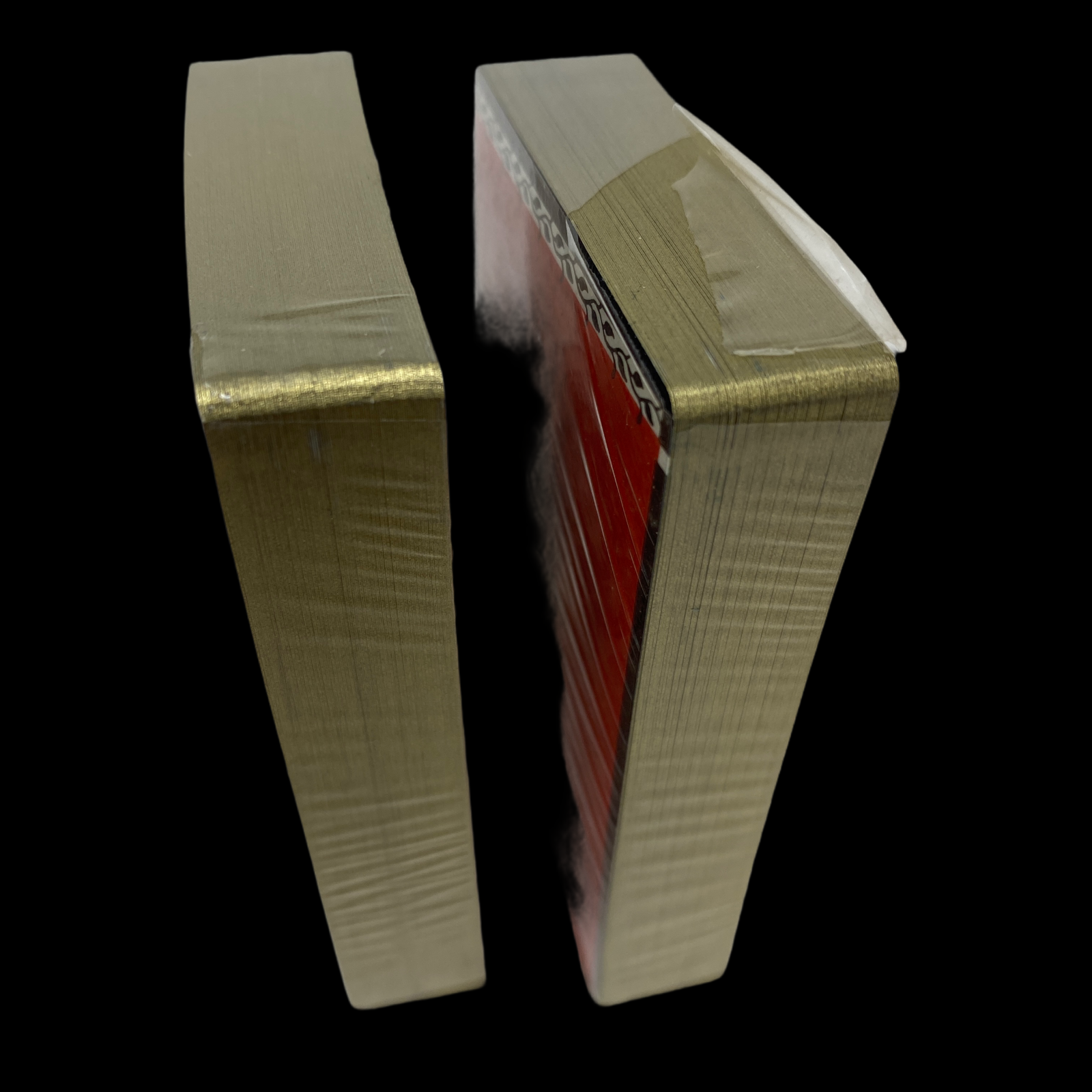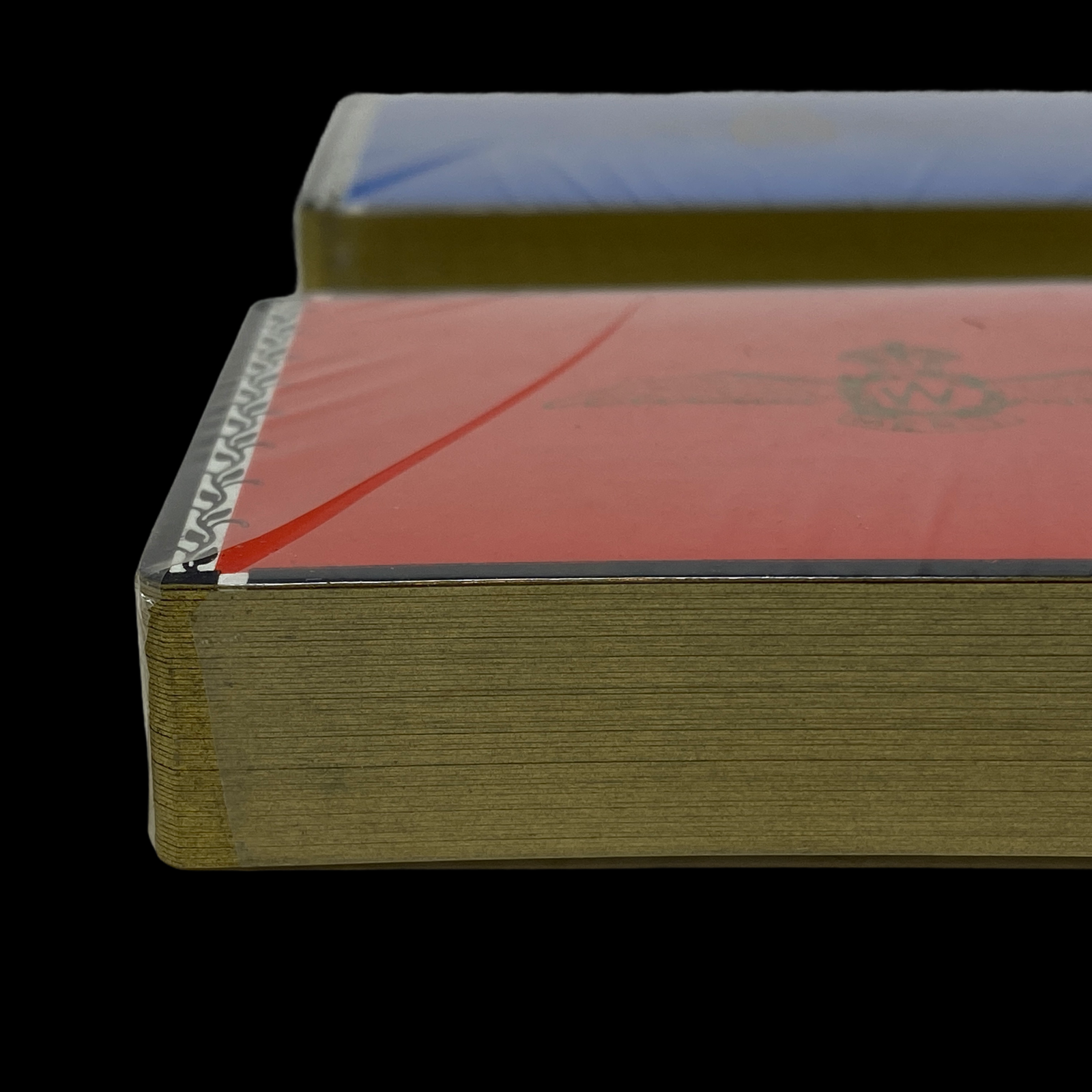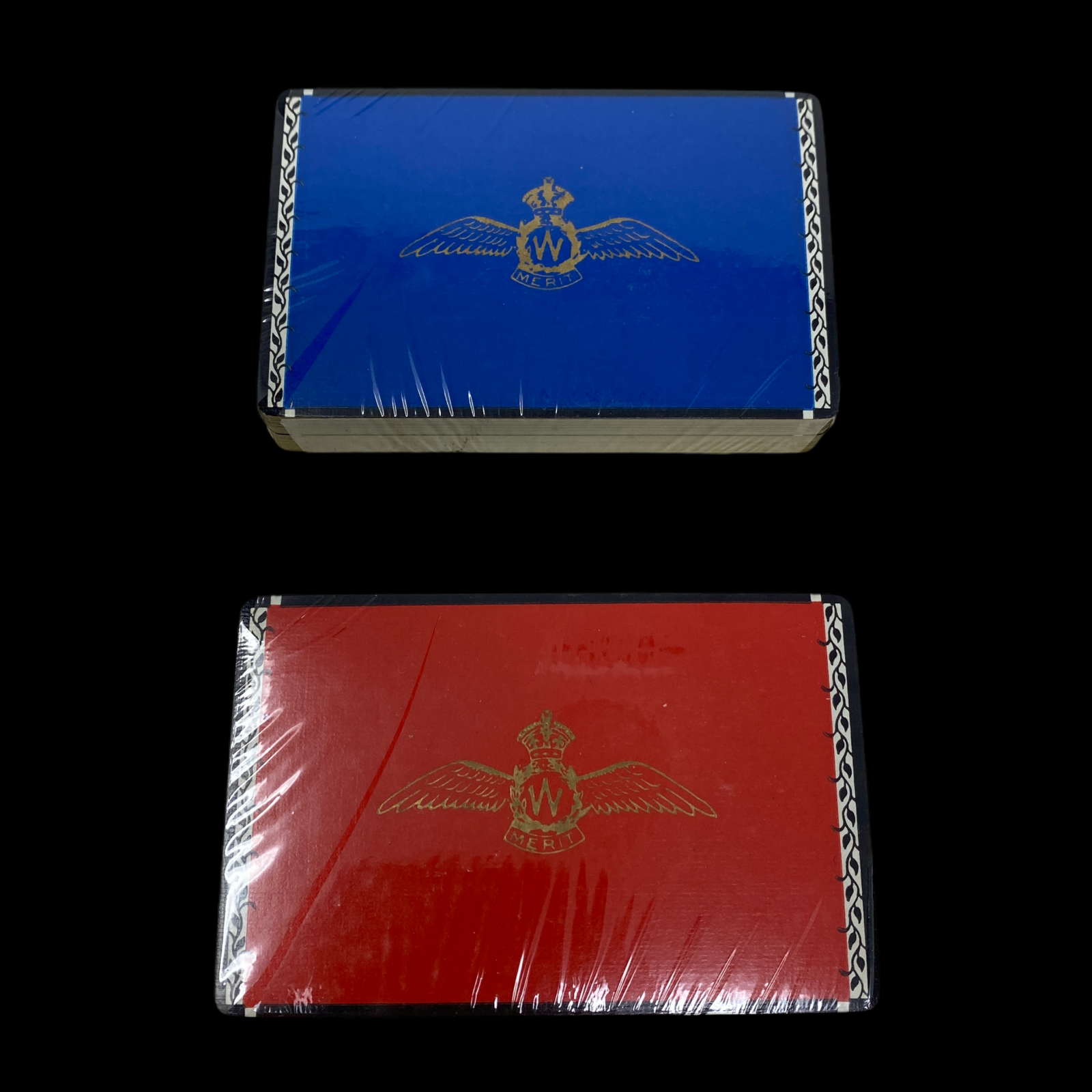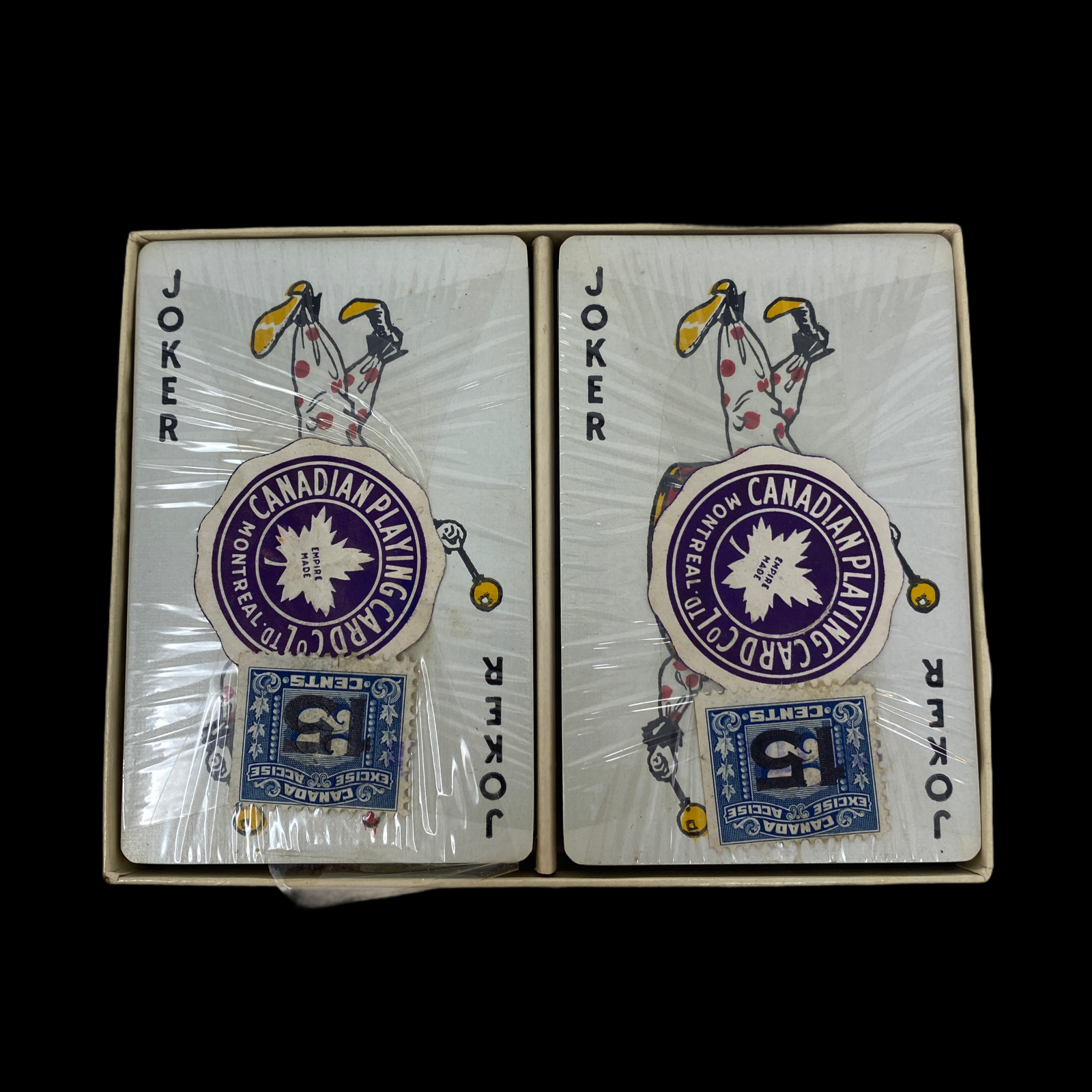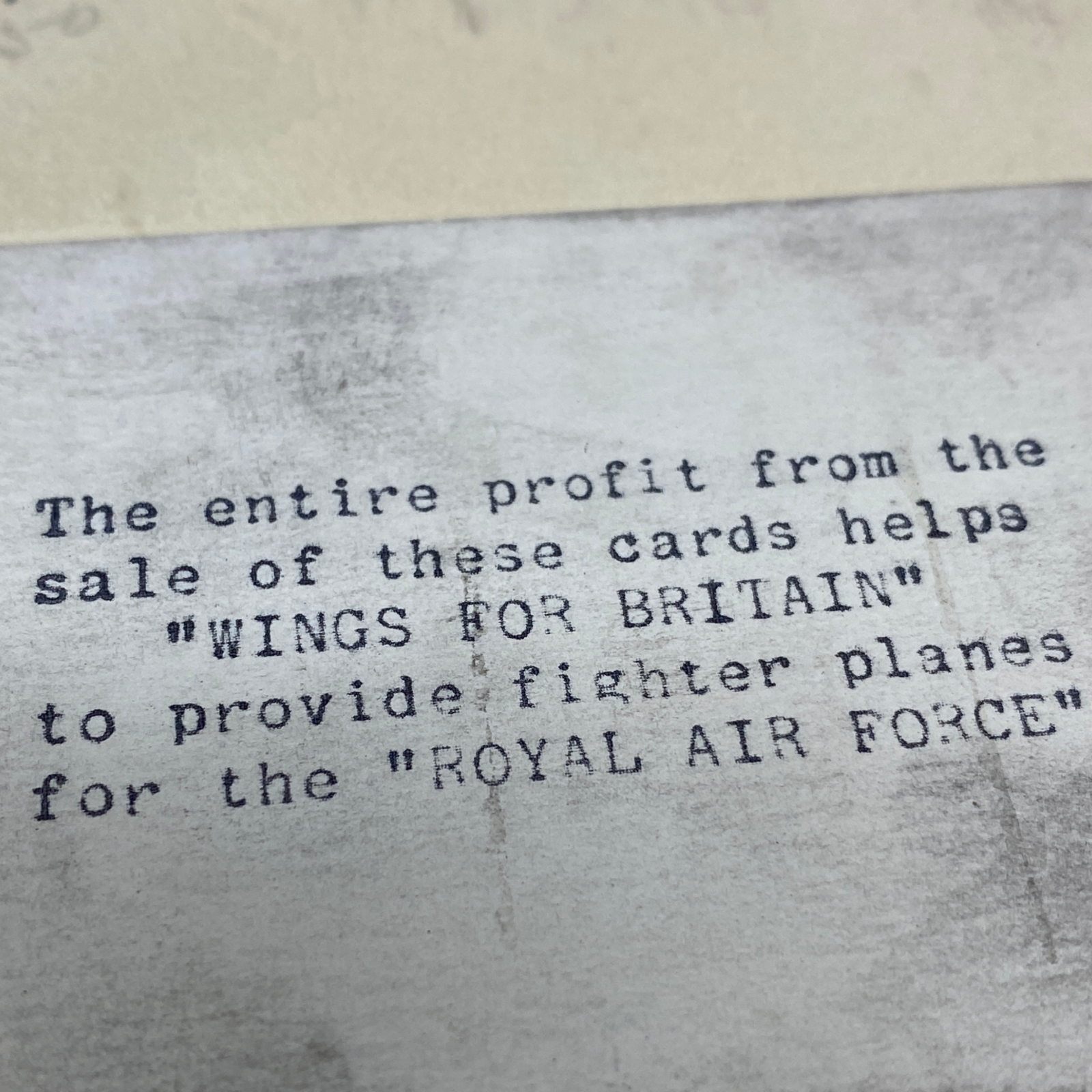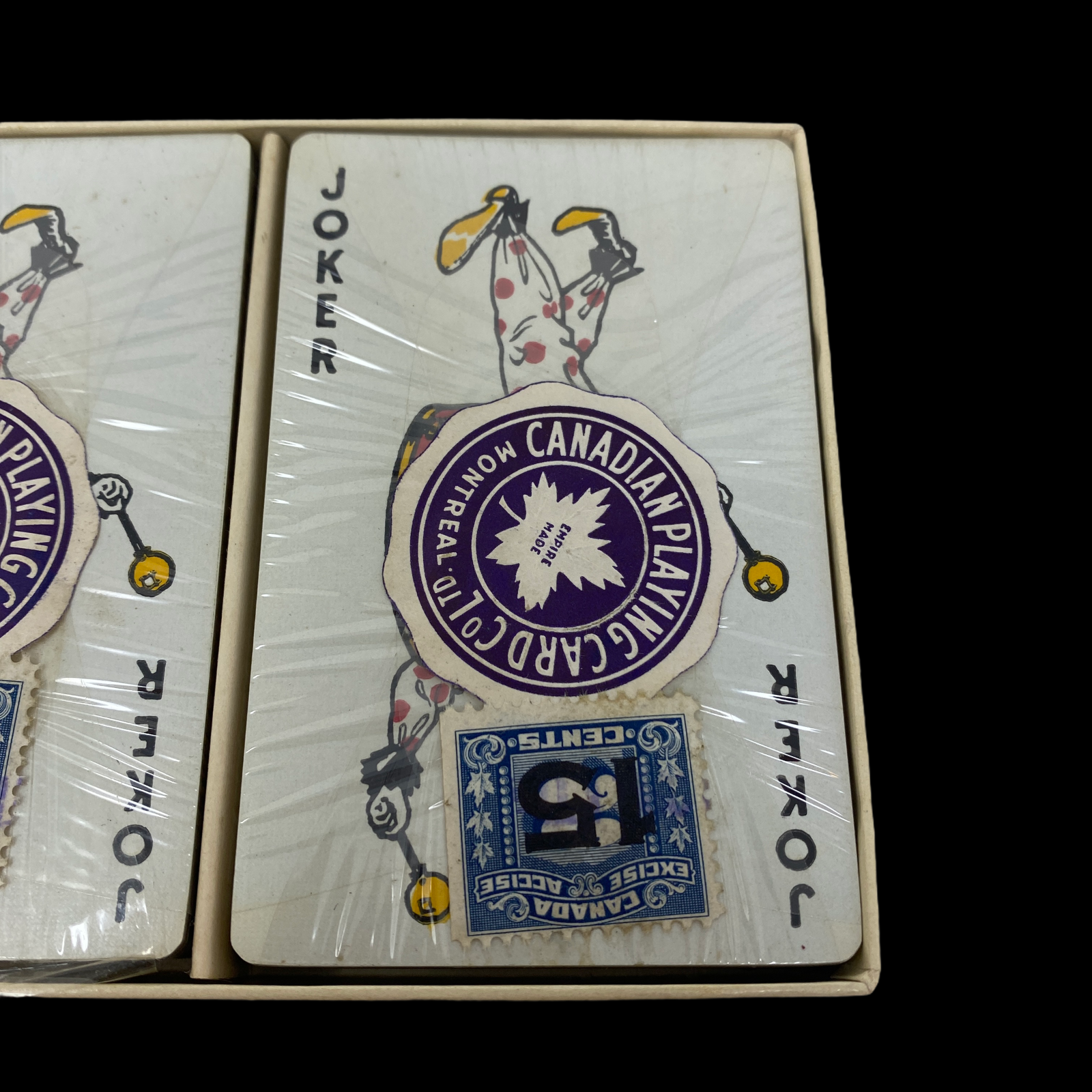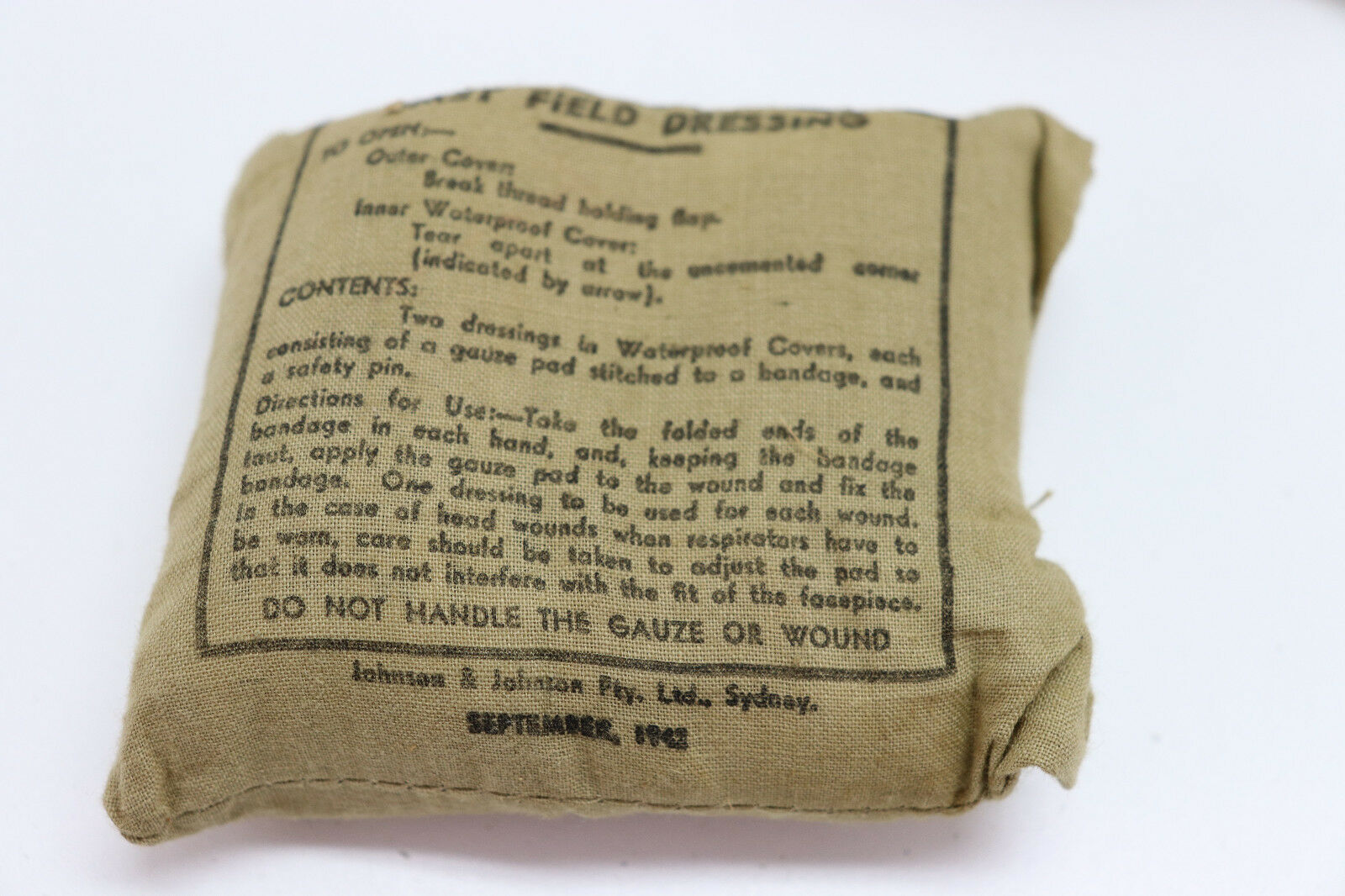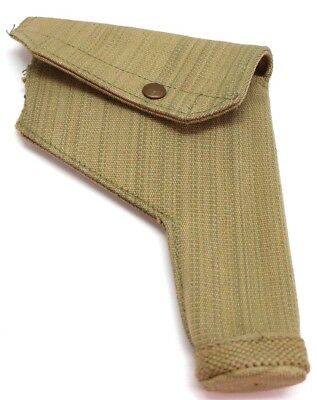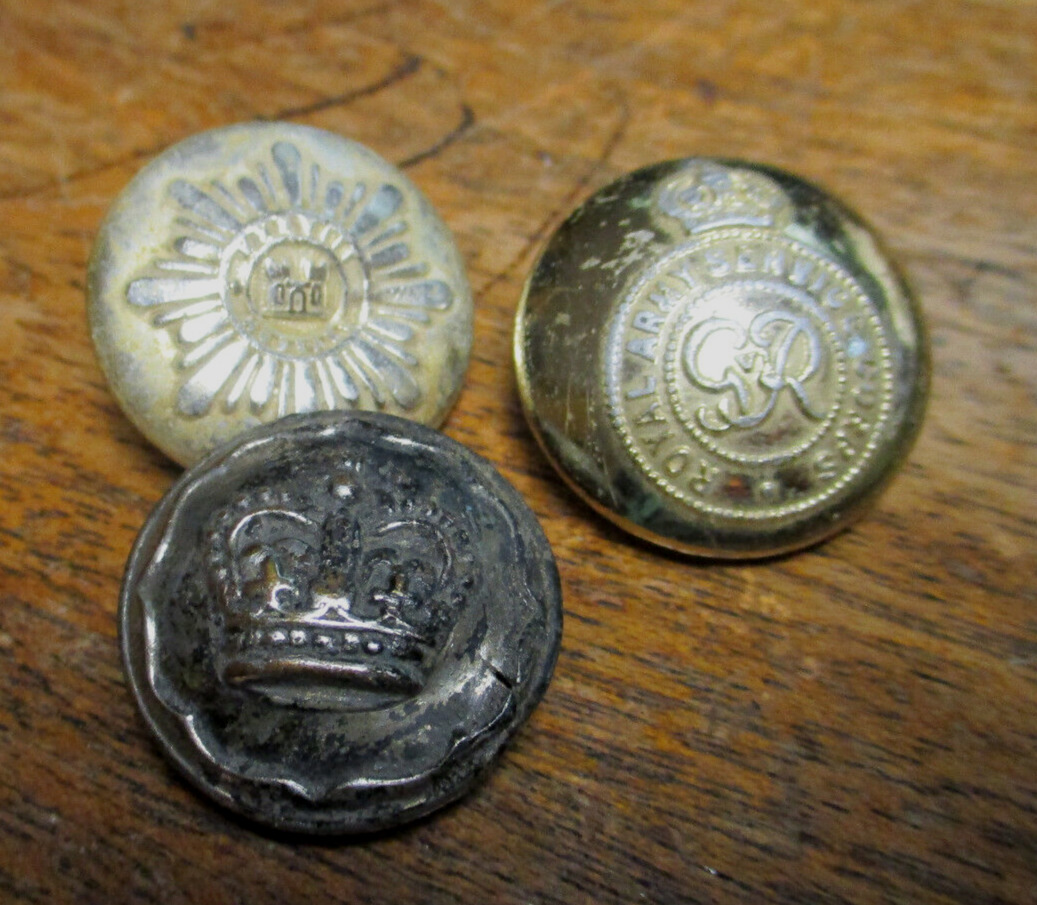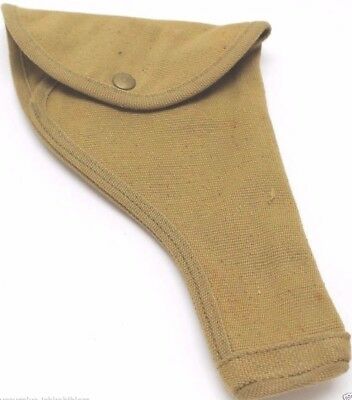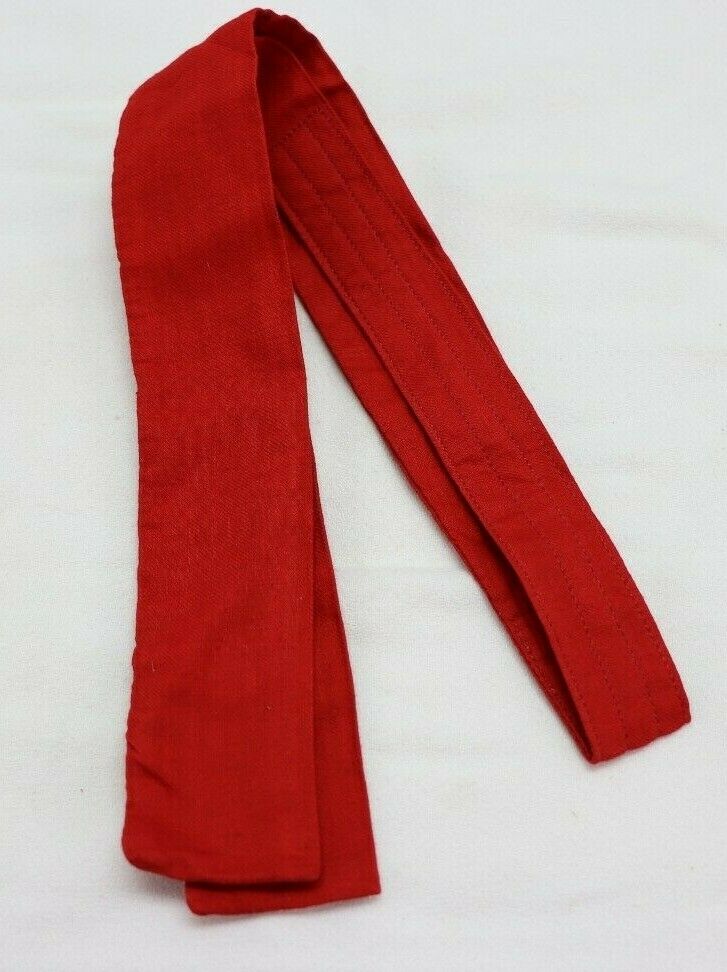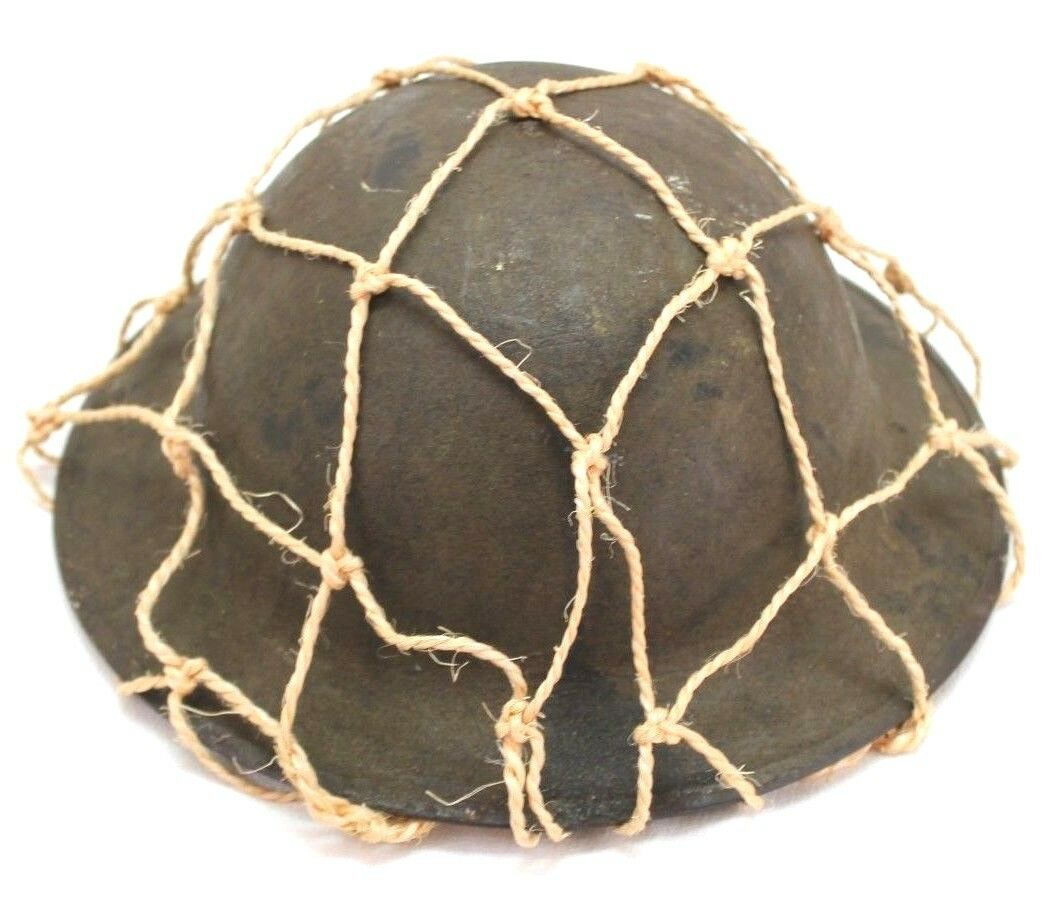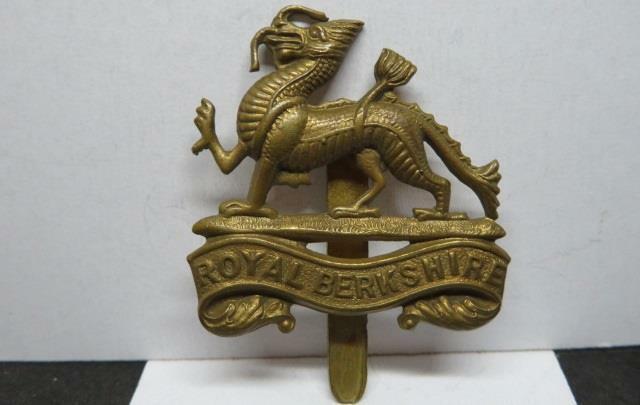-40%
WWII ULTRA RARE Mint Condition Unopened Wings For Britain RAF Playing Cards
$ 448.8
- Description
- Size Guide
Description
Comes with C.O.A.Very low print count R.A.F. early WWII gold foil playing cards....this is only double set (red and blue)
unopened
mint condition set known to exist.
The Royal Air Force's (RAF) bombing offensive against Nazi Germany was one of the longest, most expensive and controversial of the Allied campaigns during the Second World War. Its aim was to severely weaken Germany's ability to fight, which was central to the Allies' strategy for winning the war. RAF Bomber Command was created in 1936 and comprised the RAF's light and heavy bomber squadrons. Over the course of the war, it developed from a limited and relatively ineffective force into a weapon of immense destructive power. It received a major slice of Britain's economic and technological resources and many of its brightest and best young men.
These playing card sets were used as a fundraising tool by the RAF to provide needed public funding for new fighter planes. The back of the playing card set reads “The entire profit from the sale of these cards helps Wings for Britain to provide fighter planes for the Royal Air Force”. The production cost of WWII British fighter aircraft in 1940 is estimated at £5,000 or about roughly 0,000 in today’s currency.
The Spitfire (fighter plane) is the most famous plane of World War Two. Its groundbreaking design and superior specifications gave the British a decisive advantage fighting the Luftwaffe in the Battle of Britain. But early models were often cruelly exposed in head-to-head duels with the enemy. It was only after multiple improvements that the Spitfire’s winning combination of speed, manoeuvrability and firepower turned it into a formidable killing machine and a much loved British icon.
In 1940 Hitler sent 2,600 Luftwaffe fighters and bombers to destroy the Royal Air Force. At the start of the battle the RAF only had 640 fighters – Hurricanes and Spitfires – and German commander Herman Goering confidently predicted victory would only take a few days.
Britain stepped up the production of fighter planes, building them faster than Germany. The Hurricanes, with their sturdy frames, took on the bombers. The Mark I Spitfires, with their superior speed and agility, were sent up to shoot down German fighters. By the end of the battle the better organised RAF had defeated the Luftwaffe and downed 1,887 German planes. The RAF lost 1,023 planes.
